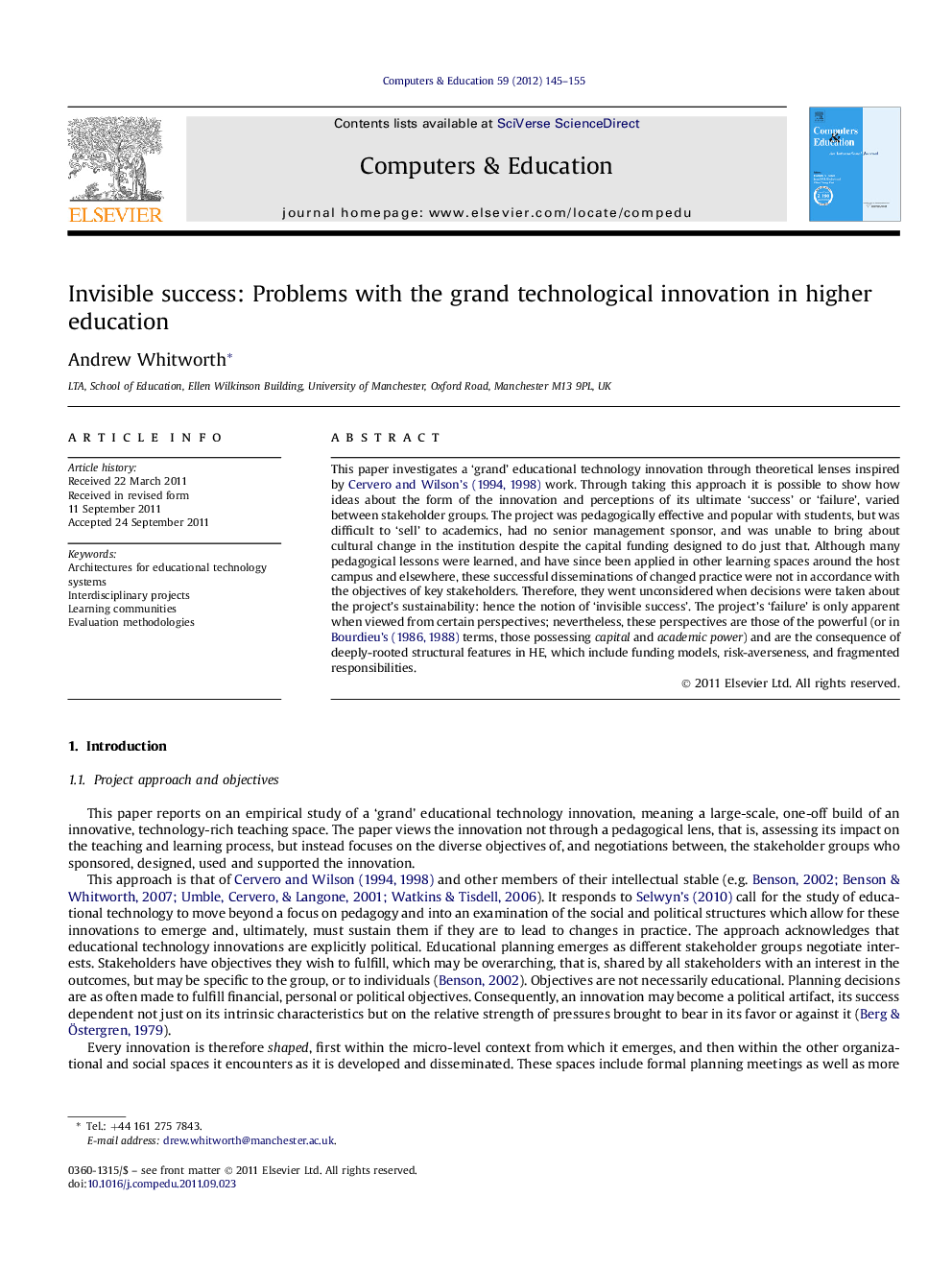| Article ID | Journal | Published Year | Pages | File Type |
|---|---|---|---|---|
| 348876 | Computers & Education | 2012 | 11 Pages |
This paper investigates a ‘grand’ educational technology innovation through theoretical lenses inspired by Cervero and Wilson, 1994 and Cervero and Wilson, 1998 work. Through taking this approach it is possible to show how ideas about the form of the innovation and perceptions of its ultimate ‘success’ or ‘failure’, varied between stakeholder groups. The project was pedagogically effective and popular with students, but was difficult to ‘sell’ to academics, had no senior management sponsor, and was unable to bring about cultural change in the institution despite the capital funding designed to do just that. Although many pedagogical lessons were learned, and have since been applied in other learning spaces around the host campus and elsewhere, these successful disseminations of changed practice were not in accordance with the objectives of key stakeholders. Therefore, they went unconsidered when decisions were taken about the project’s sustainability: hence the notion of ‘invisible success’. The project’s ‘failure’ is only apparent when viewed from certain perspectives; nevertheless, these perspectives are those of the powerful (or in Bourdieu, 1986 and Bourdieu, 1988 terms, those possessing capital and academic power) and are the consequence of deeply-rooted structural features in HE, which include funding models, risk-averseness, and fragmented responsibilities.
►I investigate a grand technological innovation in a higher education institution. ►My interest is in how the innovation was negotiated. ►Criteria of success and failure were also negotiated, rather than being pedagogical. ►Ultimately the innovation’s success was judged only by those possessing capital.
